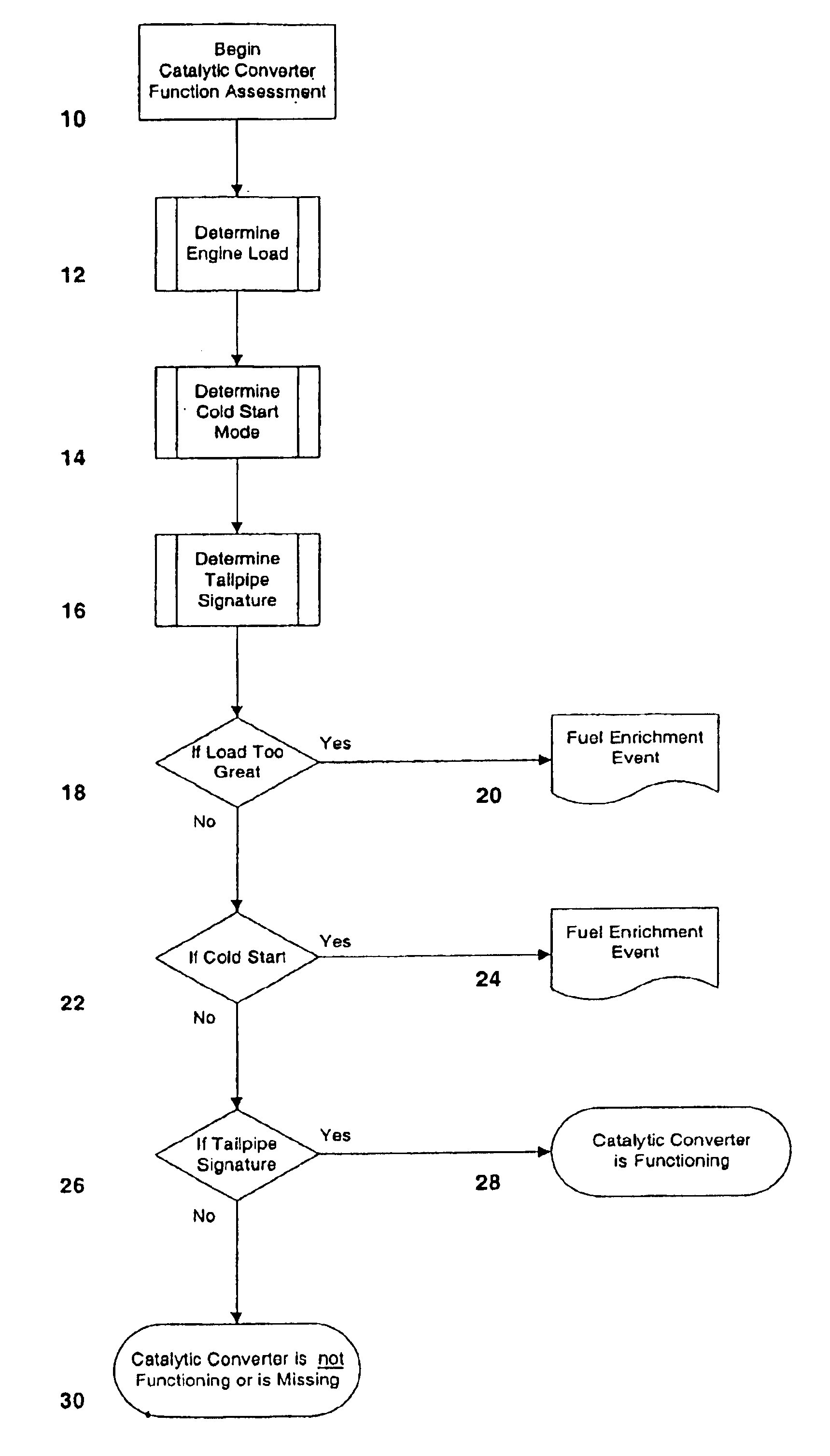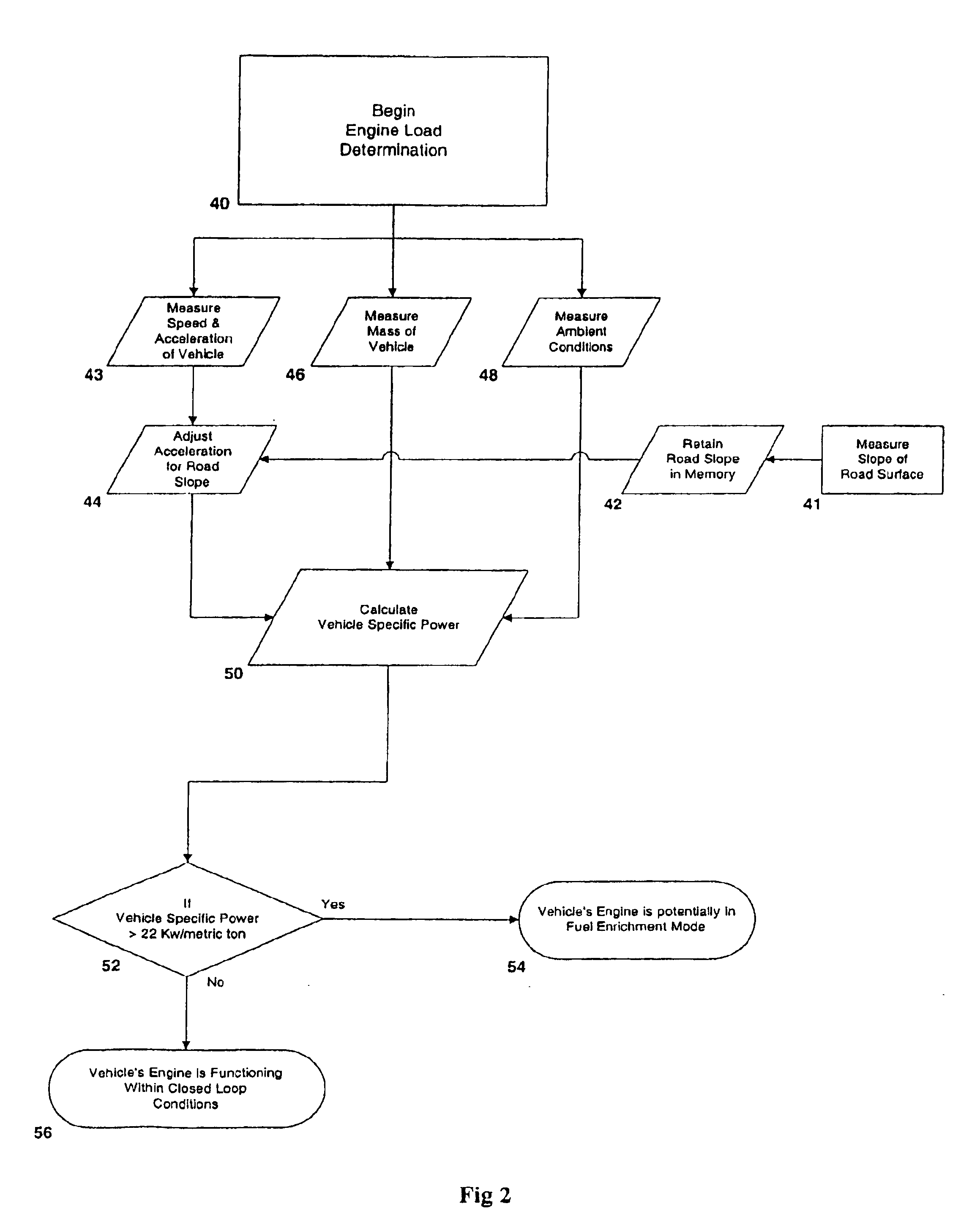Catalytic converter function detection
a catalytic converter and function technology, applied in mechanical equipment, machines/engines, electric control, etc., can solve the problems of high emissions, vehicle catalytic converters are missing or not functioning properly, and cannot distinguish properly functioning catalytic converters from vehicles with failing or missing converters, etc., to achieve the effect of better appreciation of the contribution to the ar
- Summary
- Abstract
- Description
- Claims
- Application Information
AI Technical Summary
Benefits of technology
Problems solved by technology
Method used
Image
Examples
Embodiment Construction
A preferred embodiment of the present invention provides a method of determining, based on data received via an emissions measurement system, whether the catalytic converter of a vehicle is present and functioning in a proper manner. The method includes analyzing the vehicle's emissions using an emissions sensor and determining a tailpipe signature, checking the engine's load, and determining whether the vehicle is still in a cold start or open loop mode. If the method or system determines that the engine's load is normal, and the vehicle is not in open loop mode, then the system may presume that abnormal tailpipe signatures are indicative of improper catalytic converter function or the absence of a catalytic converter.
An overview of the exemplary primary elements of the present invention is presented in a block diagram in FIG. 1. Referring to FIG. 1, the method of assessing catalytic converter function begins (step 10) by determining the load to which an engine of a vehicle is bein...
PUM
 Login to View More
Login to View More Abstract
Description
Claims
Application Information
 Login to View More
Login to View More - R&D
- Intellectual Property
- Life Sciences
- Materials
- Tech Scout
- Unparalleled Data Quality
- Higher Quality Content
- 60% Fewer Hallucinations
Browse by: Latest US Patents, China's latest patents, Technical Efficacy Thesaurus, Application Domain, Technology Topic, Popular Technical Reports.
© 2025 PatSnap. All rights reserved.Legal|Privacy policy|Modern Slavery Act Transparency Statement|Sitemap|About US| Contact US: help@patsnap.com



